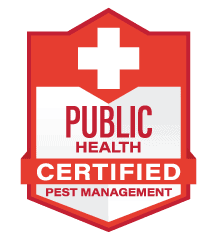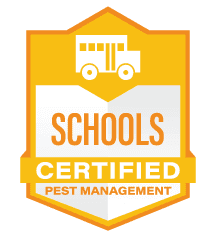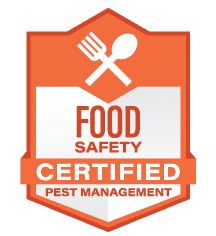Frequently Asked Questions
Pests must be controlled because they affect the health and welfare of all the inhabitants of the surrounding area directly or indirectly, as they attract many diseases and can even cause significant material damage, thus incurring costs that are generated and to avoid all this, the right thing to do is to perform disinfection.
At Prespro we will inspect your home from top to bottom, inside and out, for current or potential pest problems. Making use of pest control devices that allow monitoring the levels of pests present and provide the necessary data to make customized action plans for each different situation.
In Pespro all our services are performed with 100% environmentally friendly products, without repercussions on human health and with a high rate of efficiency thanks to our team of professionals who face the situations of your home or business. Do not improvise with the health of your family, avoid contagious diseases transmitted by pests.
Pespro has staff training and support from specialized professionals, adherence to a business management system based on ISO 9001 and an integrated service monitoring system that streamlines the customer's evaluation of the supplier and prevents, and promptly corrects, process deviations.
Our specialist service technicians and biologists will work with you in the field to define effective defenses and advise you on work practices and procedures to reduce the risk of a pest entering the facility or becoming a problem.
We have a rapid response to any signs of pest activity, as well as their control and elimination, ensuring that the source is identified in order to prevent future infestations.
Rodents are highly adaptable animals that make up over 40 percent of the mammal class. With more than 2,230 species identified, their ranks are massive, although only three types are considered major pests in the United States. They are the house mouse, the Norway rat and the roof rat.
These three rodents are identified as major pests because they are commonly found near human dwellings and are most likely to benefit from human structures, food and waste. Rats and mice pose an issue for humans living within the same vicinity for a number of reasons.
Rats and mice are both capable of transmitting disease to humans through their hair, droppings and urine. A single mouse can excrete 40 to 100 droppings per day, according to the Mallis Handbook of Pest Control by Arnold Mallis.
According to the CDC, rats and mice can transmit more than 35 diseases to humans including:
E.coli, Salmonella spp., Amoebic Dysentery, Anthrax, Cholera, Diphtheria, Hantavirus, Hepatitis, Lyme Disease, Ophthalmia, Shigella, Streptococcus, Tuberculosis, and Typhoid Fever.
SPREAD VIA: feces, urine, urine, bites and contact
Rats and mice might also bite, although it is not common. Sometimes a bite can result in rat-bite fever, a potentially fatal disease if not treated. Some people develop an allergic reaction to the excrement of rats or house mice, which can cause asthma-related symptoms.
Mice, rats and other rodents only need an opening larger than 1/4 of an inch in diameter to make their way inside a house. That means cracks and crevices, including where utilities enter the home and any gaps around doors and windows give rodents access inside. Once in, these pests will nest inside walls and crawlspaces or among boxes and crates that are often found in and around residential dwellings and in other areas where they can avoid contact with those who live there.
Once they are in your home they are very hard to get rid of. The most effective method of rodent control is prevention. Try to prevent an infestation in the first place by doing the following:
- Eliminate all entry points. Check for rips in door and window screens, gaps around window frames and cracks or crevices in the foundation. A mouse is a small creature that only needs an opening the size of a quarter-inch to gain access to your home.
Eliminate food sources. Make sure the kitchen sink is cleaned out each night and store food in airtight containers. Also, rodents love seeds. Make sure any bird seeds are stored in a container with a tightly fitting lid.
Organize cluttered areas. As earlier mentioned, rodents enjoy building their nests in low traffic areas, but they also like clutter. Organize storage areas to eliminate possible nesting sites and make your home much less appealing to rodents.
- Change of Seasons = Change Approach. Whether your facility is located in the frigid north or hot south, winter months mean cooling weather which can significantly impact pest behavior, so review your pest prevention protocols
If you think you have a rodent infestation, your mouse traps aren't working and you still see signs of these pests, you likely have a much larger infestation that requires professional assistance, it's best to Contact Us. We often get calls from concerned homeowners with rodent problems and they usually want to know "are mice dangerous?" The answer is yes and no, although they probably won't physically attack you, they transmit diseases through urine and feces and bring fleas and ticks into your home. They can also damage the structure of your home by chewing and can even cause a house fire when they chew on electrical wires.
Mice are one of the world's most common pests as scientists have revealed that Mus musculus domesticus first approached humans some 15,000 years ago. Today they are found virtually everywhere. They are rodents and can be very destructive when they infest your property. Prodigious breeders, a couple of mice can quickly turn into dozens. It won't take them long to scurry behind the refrigerator, the walls, around baseboards and into furniture. Mice can chew through fabric and crawl into cabinets and drawers to find food. In short, they are a nuisance.
Mice damage property, leave a mess wherever they decide to nest, and are even known to spread diseases such as the hantavirus and salmonella (food poisoning). They also carry fleas and ticks that can spread diseases like Lyme Disease, Colorado Tick Fever and more. Not to mention the droppings they leave behind, a disgusting common sign of a mouse infestation.
The typical mouse habitat remains a mystery for many homeowners because mice are so elusive. If you’re lucky – or unlucky, as it were – you might catch a glimpse of a mouse scurrying across the kitchen floor when you turn on the lights. But in many cases, it’s only the damage that mice cause that remains in plain sight. So, where do mice
It depends on the species, but some mice can carry germs in their urine, which can cause diseases and allergies. They can also spread diseases from ticks, fleas and mites.
These small rodents are sexually mature at six to seven weeks of age. After becoming pregnant, the female mouse will endure only 19 to 21 days of gestation, although it may last 28 days if the female is mated in the first heat following parturition. Each litter usually consists of 8 to 12 pups, with an average of 7, but they can reach up to 20 pups. A curious fact: the largest litter of a mammal in the wild was that of a female mouse in 1961: 32 offspring!
The number of litters per year varies between four and eight.
Mice construct their nests by harvesting materials that are plentiful and readily available. Mice are shy creatures, and they tend to confine their activities to a small radius. In fact, mice are rarely spotted more than 25 feet away from their nests. Paper, fabric, string, fiberglass insulation, mattress and pillow batting and plant material (e.g., straw) can all be easily shredded and transported by mice for the purpose of nest-building. House mice prefer to form their nests into rough, ball-like structures, about four to six inches in diameter. A mouse nest may also look like loose piles of those same materials or like collections of wood chips, pellets and “fill” found in hamster cages and guinea pig enclosures. Mice are not clean animals, and they often leave droppings and scatter bits and pieces of scavenged food around their nests.
Eliminating mice from a property can be very difficult because mice are nocturnal, shy, and elusive creatures. Completely eliminating mice from your property requires the knowledge and experience of a trained professional. The highly trained exterminators at Pespro understand the habits and habitats of mice, and after a thorough inspection, we will provide a tailored rodent control solution that will meet the needs of your specific property.
Rats FAQ's
Rats are typically distinguished from mice by their size and some following characteristics:
- Rats are medium-sized rodents.
- They are rodents with elongated bodies.
- Long, thin, almost naked tail, with some small scales and short hairs.
- Large eyes.
Pointed snout.
Long ears that reach the edge of the eye when stretched forward. - The coat is thick and of variable color, depending on the species.
- The belly is always lighter.
Rats have such strong teeth that they can chew through wire mesh, concrete and even lead. This can only mean one thing - financial problems for us because of the internal malfunctioning of your home or business!
The spread of diseases and parasites such as fleas and ticks. Some of the diseases that rats transmit include:
- Salmonellosis.
- Lymphocytic choriomeningitis (LCM).
- Mycoplasma
- Leptospirosis.
- Dysentery.
- Hantavirus Pulmonary Syndrome (HPS).
Parasites carried by mice and rats can also spread harmful diseases.
- Fleas: are known carriers of Murine typhus and plague and are capable of transmitting had to both humans and our pets.
- Ticks: are known to transmit diseases such as Lyme disease, Powassan virus, Rocky Mountain spotted fever and Babesiosis.
The conditions in the home can provide food, water and shelter for rats to survive, so we must make it less habitable for them, improve the hygiene of the home, so it is necessary to follow some recommendations:
- Store your food well.
- If there is a baby at home, wash the bottle well once finished eating, because they perceive the smell very well.
- Outdoor garbage containers should have secure, tight-fitting lids.
- Cracks under doors and other openings to the outside should be sealed. Consider that rats can get under a door that is only half an inch off the floor.
- Check your plumbing periodically.
- It is recommended that basements be paved so that rats cannot burrow to the surface.
- Remember to clean them periodically, since being in contact with the subsoil, it is the place par excellence for rats.
- If you have a garden, keep the grass and bushes cut, otherwise these little animals could form their burrow there.
If even with all these recommendations rats come to your house, do not get frustrated, the good news is that you can count on Pespro, as knowledgeable professionals in the field, providing our customers with an essential, safe and reliable service.
Cockroaches are synonymous with dirt, filth and poor hygiene. Their feeding and nesting habits mean they can easily ingest and carry on their bodies a wide range of pathogenic microorganisms, including bacteria, viruses, fungi and parasites which can contaminate food, surfaces and packaging and cause illness or deterioration of food products.
That is why cockroaches are proven or suspected carriers of organisms that cause salmonellosis, fever, typhoid, cholera, gastroenteritis, dysentery, leprosy, plague, campylobacteriosis, listeriosis, giardia.
Cockroaches can also trigger asthma and other allergies, as well as spread E. coli , S taphylococcus aureus and streptococcus.
You can catch a disease from a cockroach in a range of different ways. However, for the most part, cockroach diseases are caught by coming into contact with items that a cockroach has contaminated.
Cockroaches are attracted to all types of food available in your home. They will eat anything from foods, plastics, packaging, paper, leather and fabrics to animal matter (i.e. droppings).
A cockroach infestation can help eliminate it quickly and effectively. Watch for the following indications of a cockroach infestation:
- Cockroach droppings: Cockroaches leave dark droppings that look very similar to coffee grounds or black pepper.
- Cockroach eggs.
- Skin shedding.
- Property damage: They often leave chew marks and other signs of damage on items that are not just food containers.
- Unusual odor: Cockroaches leave droppings where they live and sleep. These droppings produce a pheromone that attracts other cockroaches. To humans, the pheromone presents itself as a persistent and unpleasant musty odor.
The most common way these sly pests enter your home include:
- Cracks and crevices.
- Holes in vents and pipes.
- Hitching a ride onto items.
There are lots of methods used to ward off roaches, and we will discuss a few of the most successful strategies many people used to make their houses less hospitable for these cringe-worthy bugs.
- Remove liquids: Remove standing water from buckets and sinks to keep from attracting thirsty cockroaches.
- Remove food remains: Clean up any food left on tables, kitchen counters and desks. Cockroaches only need small amounts of food for a meal, so any crumbs, powders, or liquids are fair game.
- Rinse and remove cans, bottles, and plastic containers
- Empty garbage regularly.
- Regular maintenance: Pipes, Drains, shelves, Seal entrances (Walls, skirting boards, electrical sockets, under kitchen sinks and bathroom cabinets)
Pests must be controlled because they affect the health and welfare of all the inhabitants of the surrounding area directly or indirectly, as they attract many diseases and can even cause significant material damage, thus incurring costs that are generated and to avoid all this, the right thing to do is to perform disinfection.
Our treatment options vary depending on the severity of the ant problem and the species of ants involved. Ant control requires an integrated pest management approach, utilizing several strategies to achieve the goal of completely eliminating ants. Your American Pest technician will conduct an inspection of your property to locate the ant nest(s) as well as recommend changes you can make to reduce ant-conducive conditions in and around your home. (cleaning gutters, fixing window screens and repairing plumbing issues, etc.)Treatment options include exterior sprays and gel or granular baits.
The most common species of ants trying to enter homes and businesses in the Maryland, DC and NOVA area include Carpenter ants, Odorous House Ants, Pavement Ants and Pharoah Ants. Other ant species of note for this region include Allegheny Mound Ants and Little Black Ants.
Most ants in our region do not bite or sting. Certain species do bite, like Carpenter ants or Fire ants, which can be found in Maryland. Carpenter ants are likely to be found nesting in or near your residence, but Fire ants generally do not try to come indoors and will only attack if their colony is disturbed.
Flying ants are the only ants that are able to reproduce and the swarms you see every year are the only chances ants have to mate before pairing off to form colonies with the inevitable offspring. If the swarms are too close for comfort, you can vacuum up the insects and dispose of the vacuum bag promptly. (Keep in mind that flying ants are a sign of a colony nesting nearby!)
It is not uncommon when utilizing non-repellant baits for ants to see a sudden, sometimes seemingly drastic increase in the volume of ants within days of the initial treatment. Non-repellant bait materials are targeted towards interior ant infestations and are especially effective in getting rid of ant colonies. When non-repellant baits are used, the worker ants transport the active ingredient back to the colony where it is fed to other members, including juvenile ants. It is important during the initial treatment phase to allow these ants to feed on the bait material in every effort to control colony development.
A common misconception is that "if you get bitten by a spider you will die". Not all spiders are poisonous. Among those that are, we have the black widow, tiger spider or tarantula. These arachnids have a deadly venom for people and other animals. Therefore, we must be very careful. If you see these types of spiders in your home, you should contact the fumigation company in Pespro.
The black widow spider is one of the few venomous spiders found in the United States (venom is a type of poison). It is part of the arachnid family, which includes not just spiders, but ticks, mites, and scorpions, too. Its body is about one-half inch long (smaller than a dime), and it has long legs. The black widow spider is shiny and black with a red-orange or yellow mark in the shape of an hourglass on its stomach.
Black widow spiders and their relatives can be found almost anywhere in the Western hemisphere of the world in damp and dark places. Their favorite places are woodpiles, tree stumps, trash piles, storage sheds, fruit and vegetable gardens, in stone walls, and under rocks.
If they come inside, they will go to dark places like corners of closets, garages, or behind furniture. They are shy by nature and bite only when trapped, sat on, or accidentally touched.
The bite of this spider is greatly feared because its venom is 15 times more potent than that of the rattlesnake. In humans, it causes muscle pain, nausea and paralysis of the diaphragm, which can make breathing difficult. However, contrary to what many people think, most people do not suffer serious harm, let alone death. The bite can only be lethal if suffered by young children, the elderly or the sick. Fortunately, fatalities are quite rare; spiders are not aggressive and only bite in self-defense.
Although black widow spider bites are rarely deadly, it is important to get medical attention as soon as possible because they can cause some problems.
But first, you can wash the bite thoroughly with soap and water. Then apply an ice cube to the bite to reduce the spread of the venom. Try to elevate the area and keep it still to prevent the venom from spreading.
A flea is a type of insect that feeds on the blood of warm-blooded creatures. Most are dark reddish-brown in color and about 1.5 to 3.3 mm long. They have no wings, so they move by jumping from place to place.
Fleas can live on both household pets and wild animals. Fleas most often infest mammals.
You may be tempted to try to take care of fleas on your own, but they are difficult. They are hard to find and once they get on clothing, furniture, other pets and your family, special methods are needed to eliminate them, as it is nearly impossible without pesticide treatment.
If you have a four-legged furry animal in your home, check the hind legs, head or neck if you think it may have fleas. These are the places where fleas usually hide.
Fleas prefer to live on your dog or cat, but they can also be on other animals or on you. If the population grows, fleas can spread and start living on carpets, bedding or in your yard.
Even if you don't have a pet, fleas could come from your yard or someone else's animal. These insects prefer tall grass and shady areas near porches, woodpiles or storage tanks.
Just as pet owners should treat their homes if they become infested, getting rid of an outdoor flea infestation may require you to treat your yard.
If you find that you have small red bites after a day in your yard, consult a pest control expert.
Flea bites cause several common symptoms. They are very itchy and the skin around each bite may become irritated and sore. You may experience hives or develop a rash near the site of the bite.
Scratching a lot can further damage the skin and may cause a bacterial infection in the area of the bite.
Monitor bites for signs of an infection, including white blisters or a rash.
For humans, the risk of getting a disease from fleas is very small. However, bites could be the entry of bacteria into your body and cause an infection, especially if you scratch. An infected bite will be red, warm to the touch and may release pus.
Flea bites can also cause an allergic reaction in people who are sensitive to flea bites. Symptoms can range from raised bumps on the skin to difficulty breathing.
Flea bites can also cause complications in pets, such as allergic reactions and even anemia due to blood loss. This is why it is important to take pets to a veterinarian if they have fleas.
In general, fleas and ticks proliferate with the heat, in the spring and summer months, tending to decrease in the fall and winter.
- Vacuum your house: Throw away the bag or dump the contents of the vacuum cleaner outside the house.
- Wash or replace bedding (yours and your pet's) with hot water (60°C ) and dry it at the highest temperature can help kill fleas.
Get rid of fleas on pets: Consult your veterinarian for advice on whether you can use topical or oral medications for your type of pet. You can get many treatments without a prescription, while others must be prescribed by your veterinarian. - Clean and treat indoor and outdoor areas where pets rest.
- Wash the floor of your home: with water and disinfect bleach to kill possible eggs and larvae. Avoid having your dog nearby, as it could be poisoned.
- A pest control company can help you determine the best course of action when it comes to pesticides.
Major pest threats during the
seasons of the year
Pest control should be carried out throughout the year, actively or preventively. The change of temperature is convenient to face in time the development of each one of the pests. We mention which are the most common at each time of the year.

Spring
Ants, stinging pests and crickets

SUMMER
Ants, stinging pests and crickets

FALL
Spiders, mice and rats

WINTER
Earwigs, spiders and mice
please review our Privacy Policy, if you have any questions about this Privacy Policy, you can contact us







